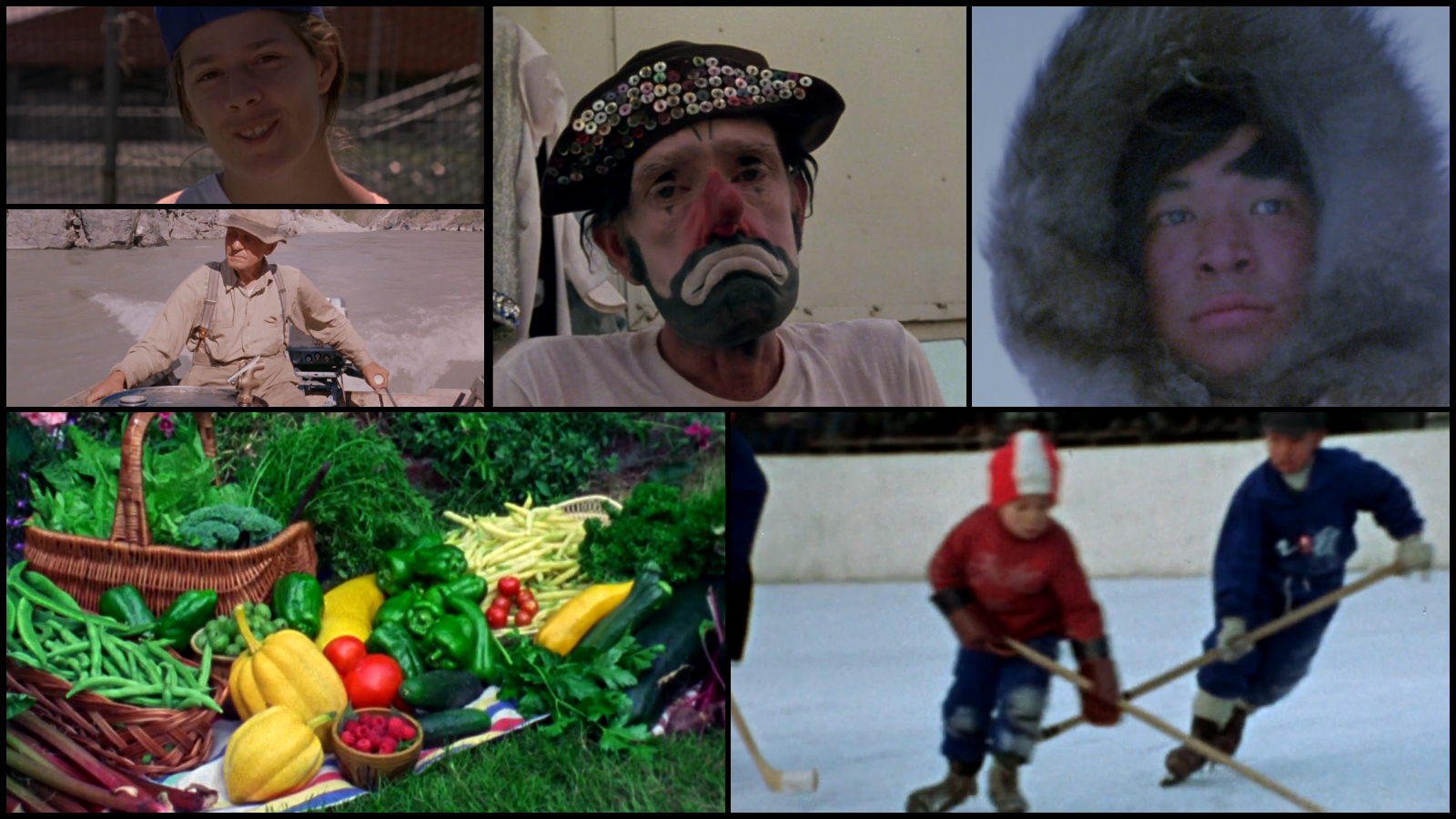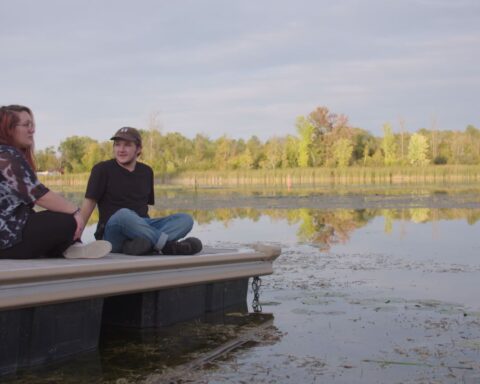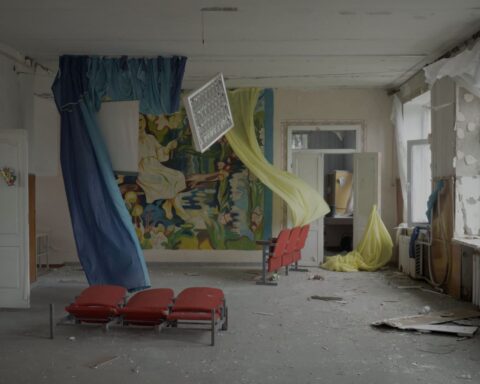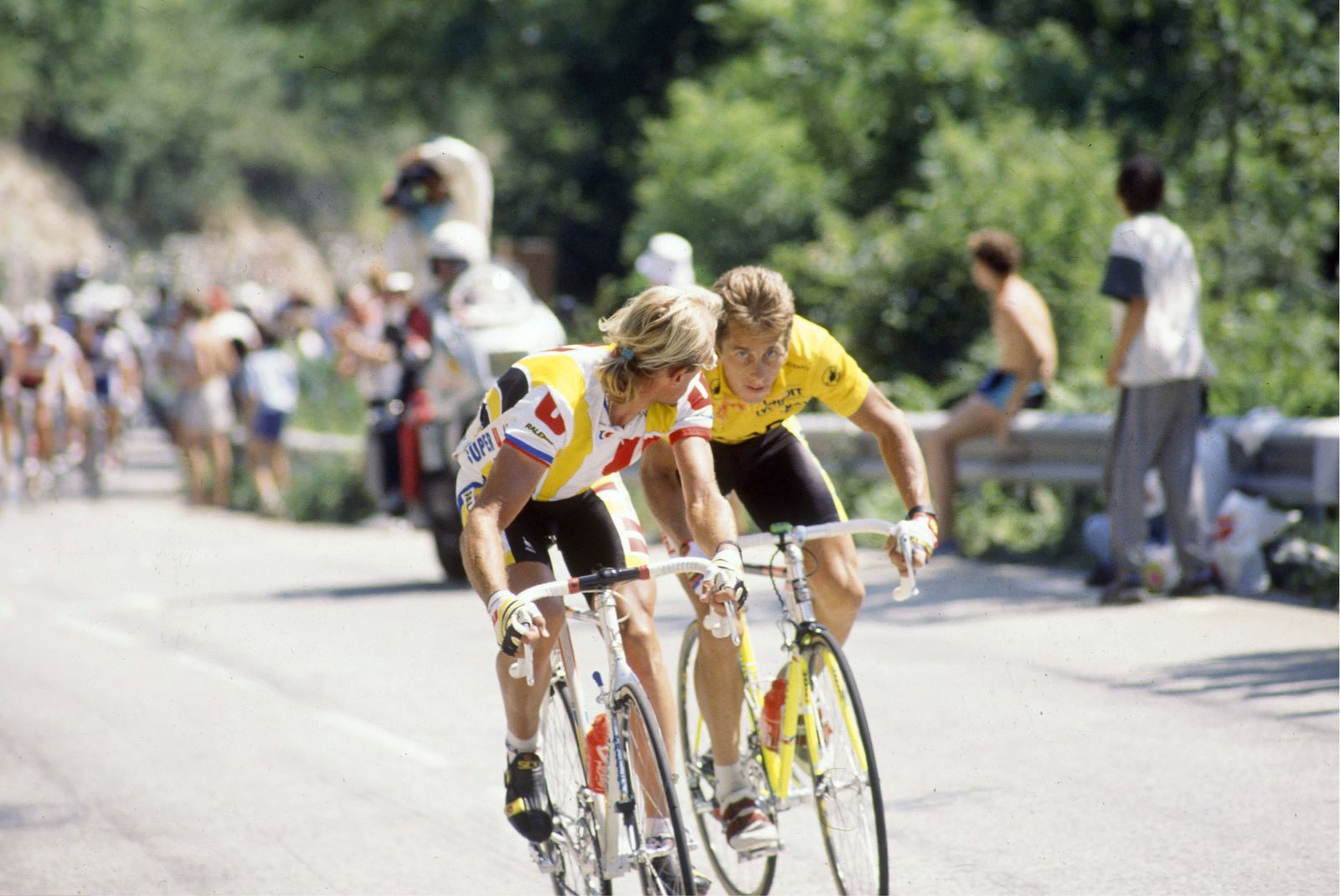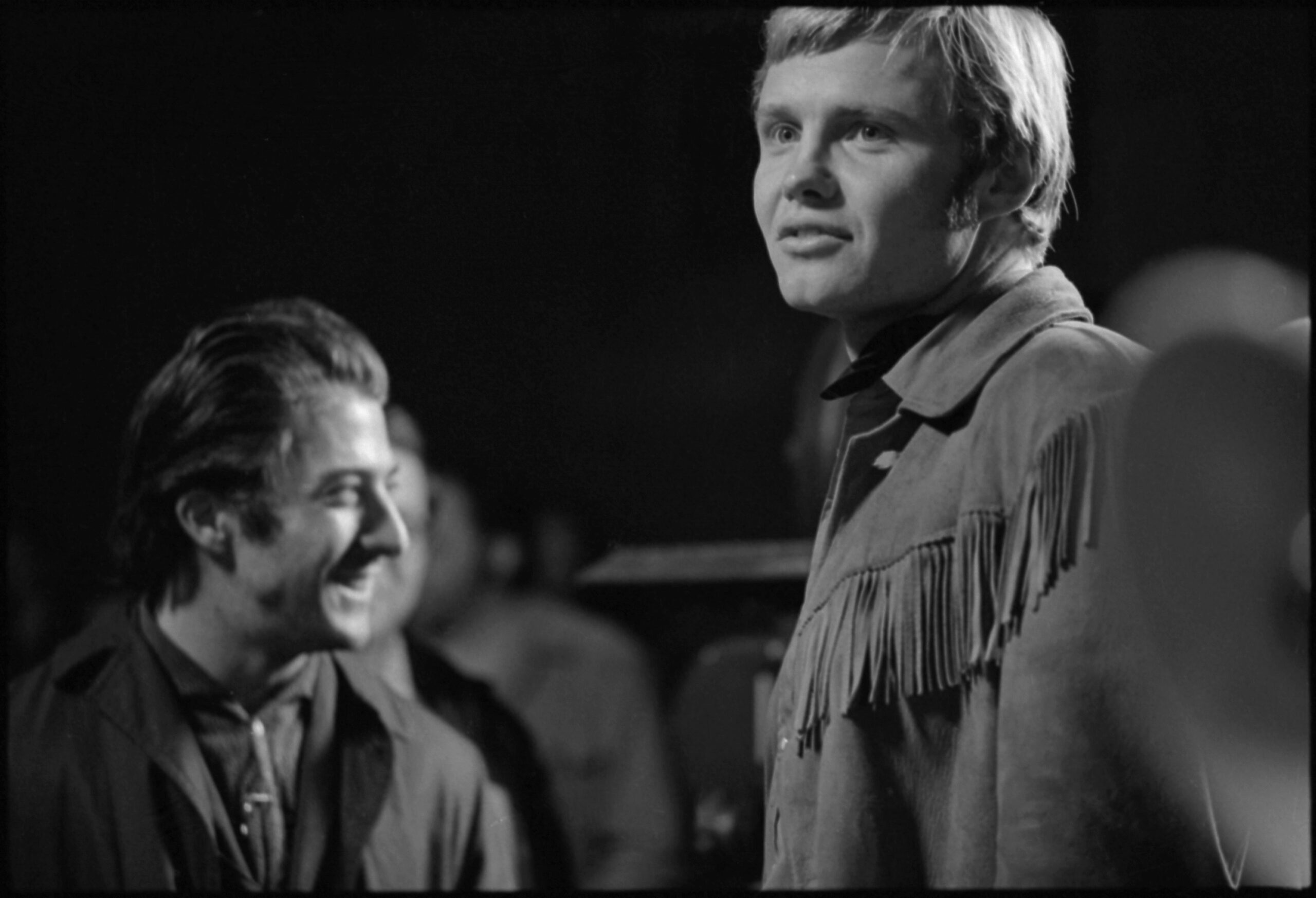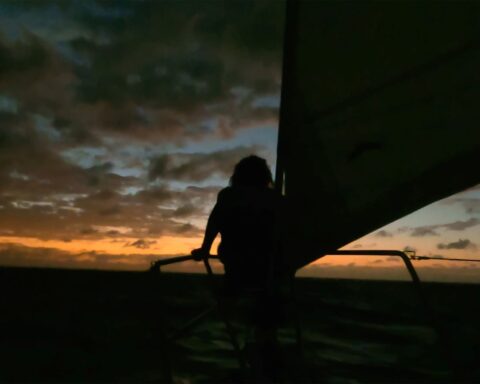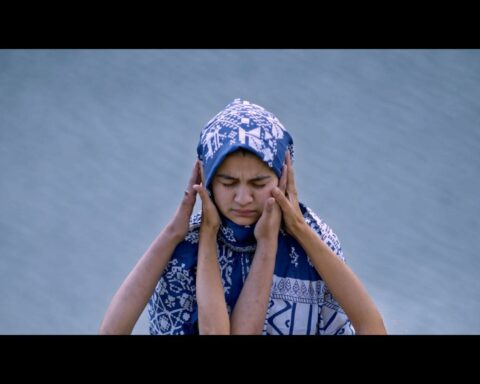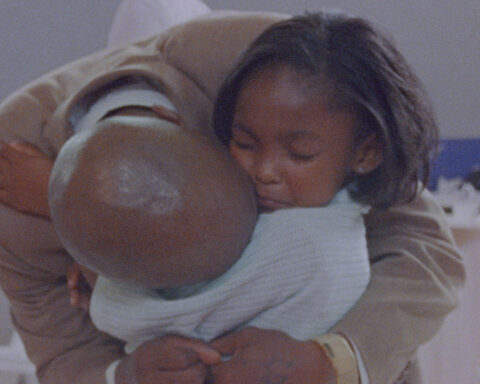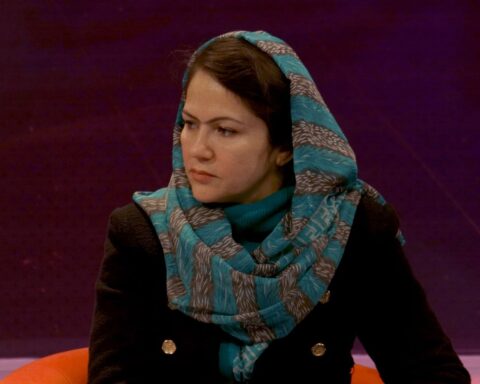I recently retired from the National Film Board of Canada (NFB), having worked there for 37 and a half years. For the last 15 of those years, I was the English collection curator, a post where I was responsible for selecting the films to be added and featured on the NFB’s online streaming site. During my time at this venerable institution, I estimate that I viewed approximately 8,500 of the total 13,000 films produced there. It is a mixture of mostly documentary, fiction, and animated films that were made as far back as the 1930s. In that batch of films, I saw a lot of excellent productions, some average ones, and others that were just plain bad. This article focuses on ten excellent documentaries—little gems that, perhaps, did not receive enough exposure or were popular at the time and have long since been forgotten.
These films are presented in no particular order.
The Defender
dir. Stephen Low, 1988
I recently saw in the news that Canada has finally chosen the fighter jet that will replace the aging CF-18s the Royal Canadian Air Force (RCAF) has flown since 1982. Well, back in the late 1970s, Bob Diemert of Carman, Manitoba had a dream: to build the world’s next great fighter plane and sell it to the RCAF. The problem was that he had no money and no backing from any government or corporation. He set out to build a low-cost fighter using basic tools and supplies with the help of an assistant. The design changed a lot over the years and was eventually dubbed the Defender.
Filmmaker Stephen Low read about Diemert’s project in The Globe and Mail and contacted him in the early ’80s about possibly making a documentary on his fighter, but was worried that it would take too long. Diemert assured him that he would have the Defender ready to fly in six weeks. To no one’s surprise, it ended up taking six years.
The documentary is a look at those very difficult years. While Diemert is deadly serious about his project, the lack of budget and basic tools used make the thing seem quite comical. At one point, he tests the wing design using “carefully calibrated instruments” (two rusty bathroom scales) and by “taking the design on a journey to the very limits of the aerodynamic envelope” (mounting it on the back of a pickup truck). This is quite hilarious, but Diemert doesn’t waver. He believes in his airplane and he will get it to fly.
He runs out of money at one point and must restore an old World War II fighter to make ends meet. Meanwhile, his wife owns a business in town to keep the family fed. Probably the most fascinating part is when he attempts to restore a Japanese Zero fighter, a project that will take him five labour-intensive years. Once he does so, it is back to the Defender. Will it ever be completed? Will it fly? Will he sell it to anyone? Well, I won’t spoil it. Watch the film and see. You will be thoroughly entertained.
The Defender, Stephen Low, provided by the National Film Board of Canada
Baseball Girls
dir. Lois Siegel, 1995
Filmmaker Lois Siegel is an avid baseball player and fan. In the winter of 1990, she was stuck in a league meeting to discuss the upcoming season when she started to think about making a film on women’s baseball. When she submitted a proposal on the history of women’s baseball to the NFB, it was happily accepted. The result is this delightful documentary that focuses on all aspects of the sport, including some choice footage of early-20th-century baseball games featuring women. Siegel featured the Colorado Silver Bullets, a professional team created to give women a chance to play at the highest level. She also filmed a Canada Cup tournament featuring teams from Japan, Australia, and Chinese Taipei. Seeing the Japanese players training and listening to their coach shows just how much the sport is cherished in that country. Former major leaguer Bill “The Spaceman” Lee also appears to put in his two cents. Overall, a wonderful documentary that shows the girls of summer playing their hearts out. Apart from TV showings throughout North America, the film was also screened in the Athletes’ Village at the 1996 Olympics in Atlanta.
Baseball Girls, Lois Siegel, provided by the National Film Board of Canada
In Search of the Bowhead Whale
dir. Bill Mason, 1974
Bill Mason had a long career at the NFB making nature films and films on canoeing, including the seminal Path of the Paddle series. In Search of the Bowhead Whale, one of his lesser-known documentaries, came about in an odd way. In 1973, The World Wildlife Fund and several American foundations wanted to send a team of scientists to Alaska to study the migratory patterns of the bowhead whale. This expedition was to include American and Soviet scientists, but the Soviets pulled out at the last minute without explanation. Before this happened, the NFB was contacted to see if they were interested in filming the expedition. The chance to film a joint US–USSR expedition was very exciting and Bill Mason was asked to go with soundman Chester Beachell and two underwater cameramen. Even without the Soviets participating, Mason and crew joined the expedition, travelling to Icy Cape, Alaska in April of 1973. The extreme low temperatures meant that their helicopter could not shut off its engines, as they might never restart. This meant dropping everyone off and staying nearby with the engines running.
Logistically, this was a very difficult expedition. It took a full week before they saw whales of any kind, finally spotting the bowheads at the end of the journey. The underwater cameraman managed to jump in the water, but it was simply too murky. Mason did shoot footage of the whales from the surface. He went back home to edit the film and added an entire section on the history of these creatures. Mason worked miracles with what he had shot and the fact that this is such a fascinating film is a tribute to his filmmaking skills.
In Search of the Bowhead Whale, Bill Mason, provided by the National Film Board of Canada
Thunderbirds in China
dir. Les Rose, 1974
In December 1973, the University of British Colombia Thunderbirds hockey team travelled to China at the invitation of the Chinese Winter Sports Federation to play games against local opposition and to hold hockey clinics. The film is a record of this tour. The Chinese had been playing for about 20 years, but wanted help from Canada to teach them the finer points of the game. The Thunderbirds blew out all the opposition, including beating the Chinese national team twice, and learned a great deal about a country that was just coming out of the Cultural Revolution. The film shows the clash of these two vastly different societies. There are some amazing moments in the film, including a sequence where the team holds an outdoor practice attended by 17,800 curious onlookers on a bitter-cold day. There is also the moment when the team arrives in Manchuria and is gawked at by locals who have never seen white people before. A simply sublime documentary showing a China that sadly no longer exists.
Thunderbirds in China, Les Rose, provided by the National Film Board of Canada
19 Days
dirs. Asha Siad & Roda Siad, 2016
It is impossible for someone who has never been an immigrant to fully understand just how difficult it is to leave your country of birth and settle somewhere else. Imagine being a refugee and being forced to move to another country. This little gem follows several refugee families freshly arrived in Canada as they stay at the Margaret Chisholm Resettlement Centre in Calgary for 19 days before moving on to a permanent home. The centre is their first stop as they learn about their new country. The film shows just how great the culture shock can be: At one point, a family is shown a shower, to which one of them asks where the water goes! Then there is the weather: very different from where they are from. The sequence where the refugees first encounter snow is very sweet. They are simply amazed that it has come from the sky. This beautiful film was directed by two sisters who are refugees in Canada. They manage to put a human face on their plight and those of others. A touching and insightful documentary.
19 Days, Asha Siad & Roda Siad, provided by the National Film Board of Canada
The Man Who Might Have Been: An Inquiry into the Life and Death of Herbert Norman
dir. John Kramer, 1998
The Cold War was a lot nastier than most of us can even imagine. In 1957, the Canadian Ambassador to Egypt, Herbert Norman, leapt to his death from a Cairo rooftop. He had been hounded for years by accusations that he was a communist spy. Norman was a brilliant scholar and diplomat who, at the time, was seen as the preeminent expert on Japan. He even served with General Douglas MacArthur during the American occupation of Japan after the Second World War. MacArthur specifically asked for Norman as his knowledge of Japan was unparalleled. An American general, who was also working with MacArthur, did not trust Norman and set out to have him investigated. This brought out flimsy evidence from the 1930s that Norman had been friendly with young communists while studying at Cambridge University. In the communist witch-hunt paranoia that followed in the United States, being friendly with communists was tantamount to being one. After pressure from the FBI and the US Senate, Norman had to be investigated by the RCMP, who cleared him. This was not enough for the Americans. He was dispatched to various embassies by External Affairs, but the hounding continued. Unable to clear his name, Norman took his life, leaving behind a note attesting to his innocence. This incredible story is painstakingly told in John Kramer’s disturbing but fascinating documentary. In this case, innocence was clearly not enough.
The Man Who Might Have Been: An Inquiry into the Life and Death of Herbert Norman, John Kramer, provided by the National Film Board of Canada
Flash William
dir. John Laing & Thom Burstyn, 1978
“Flash” William Shewchuck is a one-man film industry, making feature films in the northern Alberta town of Cadomin. He has made films pretty much on his own, occasionally with the help of a neighbour or friend but often as the cameraman, director, and only actor on set. How, you ask? The answer is, simply: with creativity, resourcefulness, and determination. The film shows him shooting extra sequences for his western Dawson City Joe, his third feature film in 25 years. It is a typical B (Z?) western with cowboys, gamblers, and saloon girls, and it is 100% cheesy. But the point of the doc isn’t that—it’s to show us this incredible man who doesn’t let such a thing as a lack of actors stop him. While on a trip to the Yukon he came across Irene, a riverboat captain, who jumped at the chance of appearing in the film. She is the one appearing in those extra sequences. Mostly, he acts himself, using a remote-control device to operate the camera. At one point, one of his actresses moved away, so he dubbed her himself (it isn’t pretty, but it works). “Flash” tours Western Canada to show his film while playing harmonica, selling tickets, and operating the projector. It’s a one-man show. This is a terrific film that demonstrates that the most important thing needed to make movies is ingenuity.
Flash William, John Laing & Thom Burstyn, provided by the National Film Board of Canada
Nahanni
dir. Donald Wilder, 1962
Nahanni was a huge hit when it was released, winning several awards including a Silver Bear for best short documentary at the Berlin Film Festival. It played theatrically all over the world and was released in 142 theatres across Canada. Forgotten now, it deserves to be re-discovered. In 18 short minutes, it tells the story of 73-year-old Albert Faille who is obsessed with finding a legendary gold mine in the Northwest Territories. Obsessed is the key word here. Even though he is quite frail, the desire to find the mine burns inside him. When the NFB crew caught up with Faille, he was on his umpteenth attempt to journey on the Nahanni River. He had failed up to then but had never given up, year in, year out. This engrossing doc has spectacular views of the Nahanni and a dramatic score. All this is enhanced by the poetic narration read by actor Douglas Rain, the voice of HAL in 2001: A Space Odyssey. A brilliant example of documentary storytelling.
Nahanni, Donald Wilder, provided by the National Film Board of Canada
My Urban Garden
dir. Polly Bennell, 1984
There is a lot of talk these days of sustainable living. This documentary, produced almost 40 years ago, shows us that the idea has been around for a lot longer than we think. In the film, Haligonian Carol Bowlby shows us how she manages to feed her family of five for seven months of the year by growing a variety of vegetables in her 260-square-foot garden. Planning and utilising every square inch is the key. Starting plants indoors ahead of the spring is also important, as the growing season is simply too short. It is a fair amount of work, but the results are worth it. This gentle film will give you many tips on how to manage any size of garden and is guaranteed to lower your blood pressure. A true hidden gem.
My Urban Garden, Polly Bennell, provided by the National Film Board of Canada
High Grass Circus
dir. Tony Ianzelo & Torben Schioler, 1976
This is easily one of my favourite documentaries made at the NFB. We follow the very low-budget Royal Brothers Circus throughout small-town Ontario in the mid 1970s. Now, this isn’t a circus in the style of Cirque du Soleil or Ringling Brothers. No, this circus has three lions, two elephants, and a hippo, along with the usual clowns and fire eaters. They go from small town to small town and set up a huge tent for a show every single day, 120 to 140 times a year. This is a slice-of-life documentary showing the 24-hour grind of putting on that many shows. At one point, they are having trouble setting up and there are only a few minutes until the show. Not to worry, the show must go on—and it does. There are many wonderful moments in this film, including the trainers taking the two elephants to a river to bathe. Then there is the moment when they discover several of the workers, including the fire-eater, have left overnight. No problem, they train a new fire-eater in the space of five minutes! We are also told that the hippo died somewhere in Saskatchewan, so they dug a hole and buried him. (I can just imagine an archaeologist digging up the site 100 years later and being quite puzzled to find hippo bones.) This film was a surprise hit and garnered an Oscar nomination in the best feature documentary category. It didn’t win, but it is guaranteed to put a smile on your face. How can you not love these people when they end every show with the phrase, “If audiences were paid, you’d be worth a million”?
High Grass Circus, Torben Schioler & Tony Ianzelo, provided by the National Film Board of Canada
So, those are ten hidden gems made at the NFB that deserve to be rediscovered. The beauty of this greatly respected institution is that you can browse the website and find films for all interests and ages. Happy viewing.




